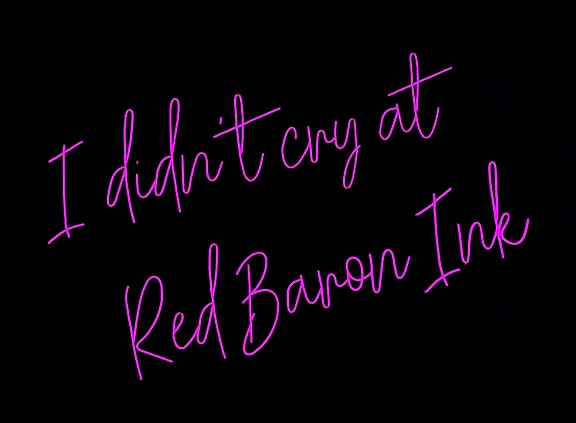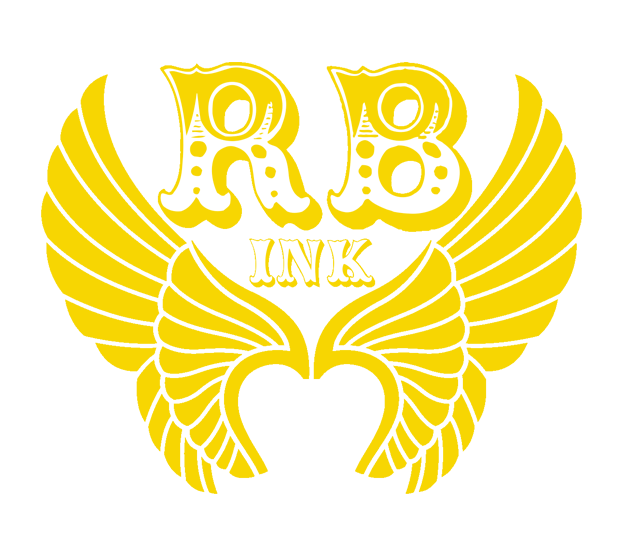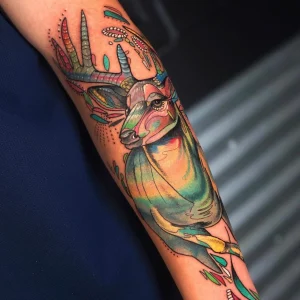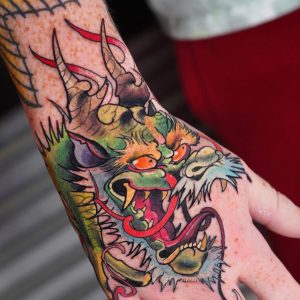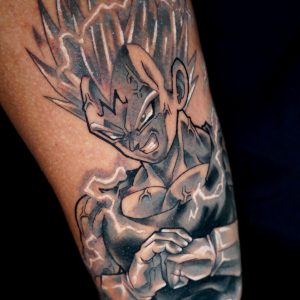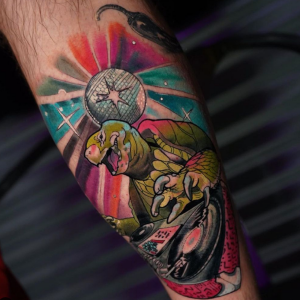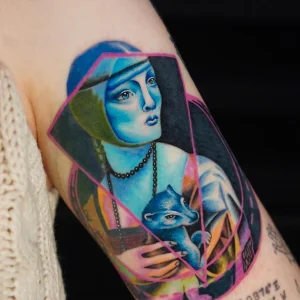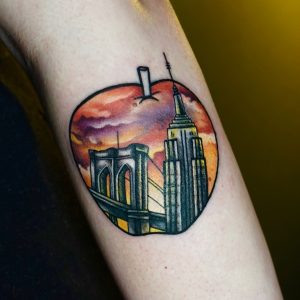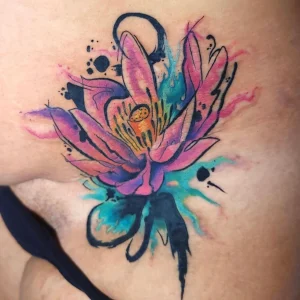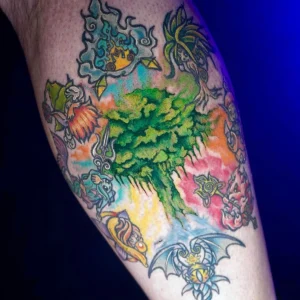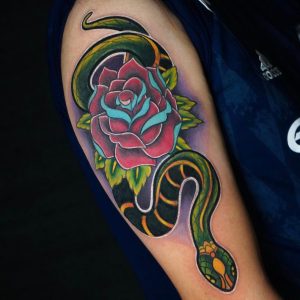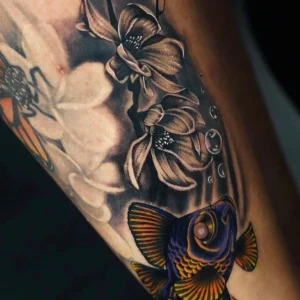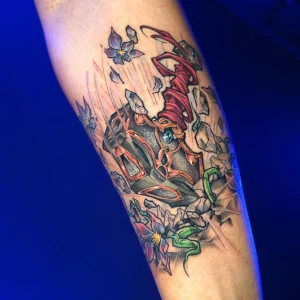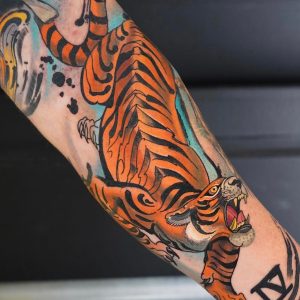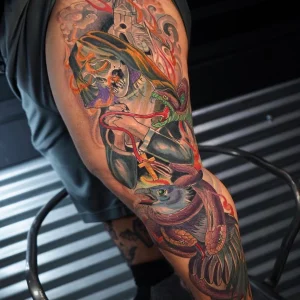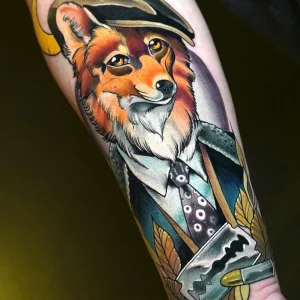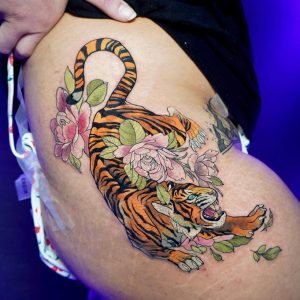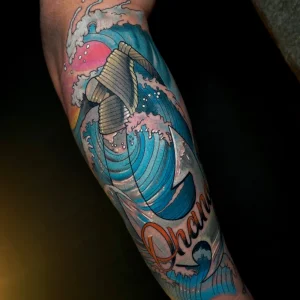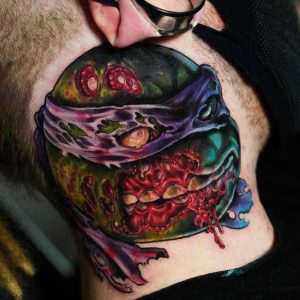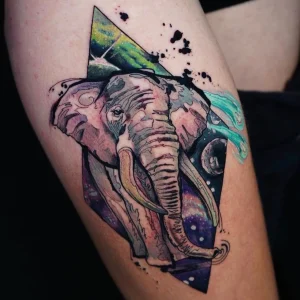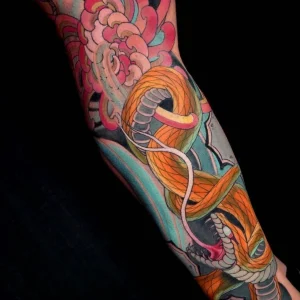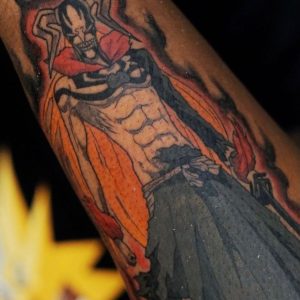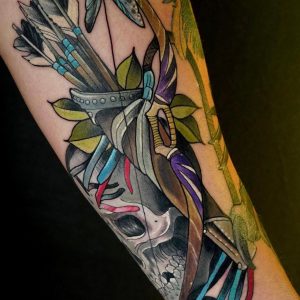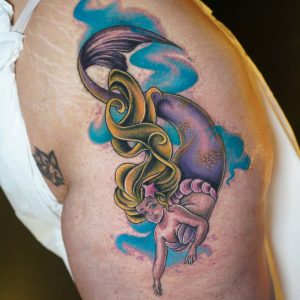Neo-Traditional Tattoos
One of the more lavish aesthetics in tattooing, this style blends the methods of American Traditional with a more modern and dimensional approach. Brilliant and dramatic colors that recall Victorian velvets, lush gems, or hues of autumn’s fallen leaves merge with lavish details like pearls and lace often come to mind when one thinks of the Neo-Traditional style. Though visually different from American Traditional tattoos, Neo-Traditional tattoos use the same basic techniques.
History and Influences of Neo-Traditional Tattooing
Though different from the American Traditional style, Neo-Traditional does follow many of the technical rules of traditional tattooing. Line width and weight may vary, but black outlines are still standard practice. Clarity of composition and the importance of a black carbon barrier to hold color are some of the commonalities. Neo-Traditional tattoos usually differ from American Traditional in their more intricate detailing, depth of image, and unconventionally vibrant color palette.
The artistic movement that is quickly apparent in the Neo-Traditional style is Art Nouveau. To understand Art Nouveau, one must understand the context and symbolism that sparked the movement.
Threatened by outside forces and intent on protecting and preserving their culture, Japan closed itself off to the rest of the globe in 1603. Over 250 years later, in 1862, Japan sent forty officials to Europe to discuss opening Japan’s guarded borders. Trade in goods eased relations between Japan and Europe, helping sustain healthy relationships. Interest in Japanese goods was almost fetishistic in Europe, with Japanese craftsmanship greatly influencing future artistic aesthetics. One can see Japanese artwork informing the works of Monet, Degas, and Van Gogh. Using flattened perspectives, patterns, and even props such as painted fans and beautifully embroidered kimonos, masters of Impressionism eagerly adapted Eastern artistic philosophies into their work. This influence of Japanese goods, ideas, art, and a return to nature was to spark the next movement to have the most significant effect on contemporary Neo-Traditional tattooing, Art Nouveau.
Art Nouveau was popular from 1890 to 1910, influenced by the Eastern artworks exhibited in Europe then. The line work and colors are much like Japanese artist Ukiyo-e’s woodblock prints. Beauty, refinement and graceful details merge with portraits. Aubrey Beardsley and Alphonse Mucha are the most famed Art Nouveau artists.
Art Deco was the movement that replaced Art Nouveau. With more modernized and less romanticized lines, Art Deco was the aesthetic of a new age. Still exotic, it was more refined than Art Nouveau, which was still steeped in the excesses of Victorian culture. Due to the Jazz Age eruption reinforced by the energy of younger generations still recovering from the depression of World War, Egyptian and African influences could be seen. Although Art Deco does not inform Neo-Traditional tattoos as much as Art Nouveau, much of the passion, flair, and fire of Neo-Traditional comes from this artistic movement.
Neo-Traditional Tattoo Art
Whether adorned in the beautiful glow of white highlighted pearls, awash in the warm and magnificent colors of cool weather, or set in a garden blessed by golden filigree and lush flowers, Neo-Traditional tattoos are known for their dense and richly sumptuous aesthetic and continue being a welcome mainstay within the tattoo community’s vast and diverse portfolio of stylistic offerings.
